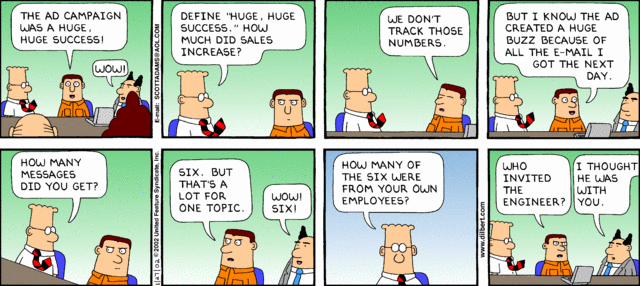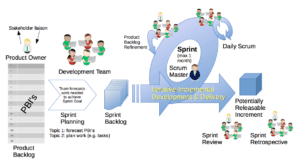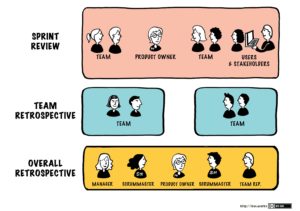
It’s usually easier to create an impression than bring a result.
Traditional marketing is an art. Growth hacking is more of a science. Αrt is about impressions – science is about results.
But why does growth hacking have more in common with the engine in your car than the painting in your living-room? In short, the product of the work of a Growth Hacker should be the product of logic, analytical thinking and data; the growth hacker wants to give answers.
Likewise, engineers want to give answers and solutions to their problems. Through time, all branches of engineering have equipped a number of techniques and methodologies to help them with their mission.
Scrum, architecture, networks, API’s, Scripting, Integration, Version Control, are just a few of the terms engineers use. Modern marketers acquire many of these terms so they can give a solution to their problems. And for good reason.
The essence of the engineer
An engineer is a person who applies scientific methods and interpretations to the analysis and solution of engineering problems.
To know how an engineer works, you have to understand how an engineer thinks and acts. The engineer possesses and uses key skills that, at some point, the marketing industry realised that could also be useful for them.
Problem Solving
When it comes to problem-solving and engineering, there isn’t always a right answer. This rule, or rather, the absence of one, applies in marketing as well. Therefore, there is no memorisation – only methodology. The possibilities for problem-solving are infinite, and this is part of the creative process of engineering and marketing.
Growth hackers borrow a number of techniques from engineers to solve problems they face every day, called problem-solving strategies:
- Abstraction: Solving the problem in a model of the system before applying it to the real system
- Analogy: Using a solution that solves an analogous problem.
- Brainstorming: Suggesting a large number of solutions or ideas and combining and developing them until an optimum solution is found.
- Divide and conquer: Breaking down a large, complex problem into smaller, solvable problems.
- Hypothesis testing: Assuming a possible explanation to the problem and trying to prove (or, in some contexts, disprove) the assumption.
- Lateral thinking: Approaching solutions indirectly and creatively.
- Means-ends analysis: Choosing an action at each step to move closer to the goal.
- Method of focal objects: Synthesizing seemingly non-matching characteristics of different objects into something new.
- Morphological analysis: Assessing the output and interactions of an entire system
- Proof: Try to prove that the problem cannot be solved. The point where the proof fails will be the starting point for solving it.
- Reduction: Transforming the problem into another problem for which solutions exist
- Research: Employing existing ideas or adapting existing solutions to similar problems
- Cause analysis: Identifying the cause of a problem.
- Trial-and-error: Testing possible solutions until the right one is found.
Numbers. Numbers everywhere.
Size, Acceleration, pressure, amplitude, density, frictional force. Engineers have a lot of data to take into account and a number of different units to express those: Hertz, watt, square metres, joule.
Similarly, digital marketing introduced a whole new chapter of numbers and metrics: Bounce rate, traffic, customer attrition, cost per lead. Many of them have their very own acronyms: CRO, CTR, BR and PPC.

When are you going to get the most email openings? On a Monday morning or a Thursday noon?
Where should your call-to-action button be? In the middle or at the end of your page?
How are specific channels different? Which channel should you use for awareness purposes and which one for acquisition?
The modern marketer wants not only to be successful, but they also want to know why they were successful when this happens. If you know why you became successful, you have higher chances to succeed again in your next task.
Tech-Savviness
Technology involves the applications of science that make our lives easier. The simplest product of technology is the tool. From the hammerstone to the wheel, to the electric screwdriver, humanity learns to develop and use tools. Engineering and technology go hand to hand. Without tools, there can be no engineering.
Only a few years ago, this was not the case for marketing. Things have changed a lot since then, and this is why today we see ‘digital’ next to ‘marketing’.
Google Adwords, Mailchimp and Trello are the equivalents of the wrench, the multimeter and the test tube.
Typically, a Growth Hacker’s tools are considered to be everything that comes in use, depending on the occasion, but these are the main categories:
- Analytics Platforms (Google Analytics, Mixpanel, Trak.io)
- HTML editors or IDEs (Sublime Text, WebStorm, Eclipse)
- Product & Project Management (Trello, Asana, Jira)
- A/B Testing Platforms (Google Experiments, Taplytics)
- Landing Page Platforms (Unbounce, LeadPages, Instapage)
- Email Marketing (MailChimp, Mandrill, Intercom)
- Social Media (Buffer, Social Sprout, SumAll)
Automation
A big branch of technology is automation. Automation engineering is about the automation of a task so that it doesn’t require any human intervention while trying at the same time to improve its reliability and efficiency.
Likewise, marketing automation refers to software platforms designed to automate marketing actions.
In the ever-changing environment of technology and digital reality, you always have to keep an eye out and move fast, or you will get left behind. Automation is what helps you move faster.
Marketing automation tools try to give save you time so you can focus on what’s important.
Real is the new cool.
From traditional marketing to growth hacking, decision making has also changed. The question that a traditional marketing boardroom would have is “Is this idea cool enough”. On the other hand, the modern digital marketing boardroom would ask “Is this idea high-performing enough”?
In growth hacking, more often than not, facts count more than feelings.
Software Engineering in Marketing
Agile – Scrum
Scrum is a framework for managing a certain work. It is designed for development teams of usually between three to nine members who break their work into actions and implement them within timeboxed iterations, called sprints. But more on sprints later.

Scrum is an Agile framework – so popular, in fact, that many people think Scrum and Agile are the same thing.
Agile, according to Agile Alliance, is the ability to create and respond to change in order to succeed in an uncertain and turbulent environment. Agile is the sum of methodologies that emphasises close collaboration between the development team and business stakeholders; frequent delivery of business value, tight, self-organising teams; and smart ways to craft, confirm and deliver code.
Many frameworks can be used to implement Agile, such as Kanban but scrum has a unique flavour because of the commitment to short iterations of work.
As growth hackers, we also have sprints. In product development, a sprint happens in a set period, usually every two weeks. In these two weeks, a specific work has to be done and has to ready for review.
Each sprint begins with a planning meeting. During the session, the product owner (the person requesting the work aka Growth Master in Marketing) and the development team (aka Growth Team in Marketing) agree upon exactly what action will be accomplished during the sprint. The development team has the final say when it comes to determining how much work can realistically do during the sprint. The product owner has the final say on what criteria need to be met for the work to be approved and accepted.

Sprint is forcing us, marketers, to split the marketing experiments into small pieces of 1 to 2 days.
Types of Scrum held at regular intervals:
Daily Standup
In development
The daily standup is significant because it brings accountability to the Scrum team members. These Scrum meetings occur throughout the sprint, and everyday members answer three main questions:
- What did Ι do yesterday?
- What am I going to do today?
- Is anything impeding my progress?
In Marketing
The daily standup is a very short meeting to define the daily tasks and answer the same three questions. In the case of growth hacking, the most crucial question is the third one. There are always tasks to be implemented before others. For example, a keyword analysis should be made before the creation of a power page. Custom events require a specific form ID to exist in the pages etc.

Sprint Planning
In development
Sprint Planning is about selecting the appropriate tasks for the given capacity through estimations.
Sprint planning lines up the work and provides an estimation, so you know from the beginning what your capacity is, based on how many people are on your team. Who’s on vacation? How many hours do you have to work with? What can you accomplish in two weeks with the capacity you have available? Sprint planning’s mission is to answer these questions.
Each Sprint starts with two planning sessions to define the content of the Sprint: the WHAT-Meeting and the HOW-Meeting. In the WHAT-Meeting, the Scrum Team commits to the User Stories from the Scrum Product Backlog. A User Story is an informal, natural language description of one or more features of a software system. User Stories are often written from the perspective of the end-user. Now, a HOW-Meeting breaks the committed User Stories into smaller and concrete tasks. Then implementation begins.
The combination of these two meetings is also known as Sprint Planning Meeting.
In marketing
Similarly to development, Planning starts with the check of the capacity availability. Not all engineers are available simultaneously, and not all teams have open slots. Capacity doesn’t drive experimentation. Experimentation drives capacity. That’s why the planning meeting is critical because the team can see who is needed and what needs to be done.
To define the experimentation, you need to identify the strategy of prioritisation as described here. Sprint Planning should not be confused with a brainstorming meeting. Brainstorming meetings are to propagate the backlog while planning a meeting is about deciding which of the experiments/tasks from the backlog should be implemented in the next two weeks, aka the current sprint.
Sprint Review
In development
At the end of the Sprint, the Scrum team holds the sprint review to demo functionality and discuss with shareholders and others what the team accomplished during the sprint.
In marketing
Similarly here, the Sprint Review is about deciding with the shareholders if an experiment has failed or succeeded. What were the results based on the estimations? A successful experiment is what the team will focus on while those experiments that failed will be documented.

Sprint Retrospective
In development
During the Sprint Retrospective, the Scrum team revisits things that did or didn’t work during the last sprint. The team also uses this Scrum meeting to determine which changes the team has to make and what should remain as is.
In marketing
During the Sprint Retrospective meeting, in spite of the results of the review, we growth hackers focus on the execution part. Did the execution go according to plan? Are there any mistakes that the team could have avoided making? Did an experiment fail due to a bad implementation or is there a different reason to blame?
Product backlog refinement
In development
The product backlog refinement lasts one to two hours, depending on the Scrum team. It happens between sprints, and it gives the Scrum team a chance to:
- Evaluate a story for clarity, size and feasibility
- Learn what’s coming up in the next sprint
- Express concerns early in the process
- Make sprint planning move quicker
In marketing
Growth Masters and Account Managers are running this meeting to refine the estimations and add more tasks (as a result of findings, shareholders or another brainstorming meeting) or remove those that are not valid anymore.
Marketing is both an art and a science.
Marketing used to be characterised by the predomination of advertising. Nowadays, marketing, through the digital channels, is more about research, analysis, testing, tweaking and polishing. Over the last years, the work of the marketer has changed drastically. With the advent of newer technology, marketing gave birth to digital marketing and digital marketing gave birth to growth hacking. Growth hacking borrows the mindset and techniques from various engineering fields to make it what it is: the process of experimentation to identify the most efficient ways for growth.
The post What Can Marketers Learn from Engineers? appeared first on GrowthRocks.